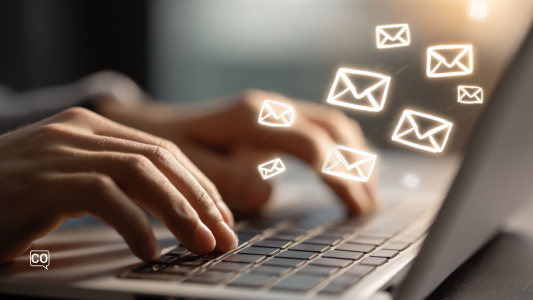Exercise 1: Text
Instruction: 1. Read the text in pairs. 2. Memorize the phrases by covering the translation.
Este texto compara cómo se enviaban cartas en el pasado con cómo nos comunicamos hoy a través de correos electrónicos y redes sociales.
📬 Cartas, correos y clics ✉️💻📱Hace muchos años, en España, era muy común ir a correos para enviar una carta. Las personas escribían la carta a mano, con cuidado. Añadían el nombre del destinatario, escribían una despedida como “Un abrazo” o “Con cariño”, y al final ponían la firma. Luego compraban un sello, lo pegaban, y dejaban la carta en el buzón. A veces, las cartas tardaban varios días o semanas. Pero cuando el destinatario recibía una carta, se emocionaba. Era un momento especial y personal. Hoy, casi nadie manda cartas. Ahora preferimos enviar un correo electrónico o un mensaje por WhatsApp o Instagram. Es más rápido y cómodo: solo se necesita un móvil o un ordenador. En el email, podemos escribir al usuario, adjuntar un archivo, y hacer clic en "Enviar". El mensaje llega en segundos a la bandeja de entrada. También es posible responder a un correo muy rápido o descargar documentos. A pesar de esto, algunas personas todavía disfrutan de las cartas. Dicen que es más personal, más especial. Todavía hay quien colecciona sellos o guarda cartas con cariño. Ir a Correos, escribir a mano, y esperar una carta es algo más humano. Hoy usamos emojis en vez de firmas, escribimos “jajaja” en vez de “Querido amigo” y damos a “Enviar” sin pensar. Pero lo importante no ha cambiado: seguimos mandando mensajes, queremos estar conectados, queremos que alguien nos lea. |
📬 Letters, mails and clicks ✉️💻📱Many years ago, in Spain, it was very common to go to the post office to send a letter. People wrote the letter by hand, carefully. They added the name of the recipient, wrote a farewell like “A hug” or “With love”, and at the end put the signature. Then they bought a stamp, stuck it on, and left the letter in the mailbox. Sometimes, letters took several days or weeks. But when the recipient received a letter, they got excited. It was a special and personal moment. Today, almost no one sends letters. Now we prefer to send an email or a message via WhatsApp or Instagram. It is faster and more convenient: you only need a mobile phone or a computer. In the email, we can write to the user, attach a file, and click on "Send". The message reaches the inbox in seconds. It is also possible to reply to an email very quickly or download documents. Despite this, some people still enjoy letters. They say it is more personal, more special. There are still those who collect stamps or keep letters with affection. Going to the Post Office, writing by hand, and waiting for a letter is something more human. Today we use emojis instead of signatures, write “hahaha” instead of “Dear friend” and press “Send” without thinking. But what is important has not changed: we keep sending messages, we want to be connected, we want someone to read us. |
Exercise 2: Questions about the text
Instruction: Read the text above and choose the correct answer.
1. ¿Qué tenía que hacer una persona para enviar una carta hace muchos años en España?
(What did a person have to do to send a letter many years ago in Spain?)2. ¿Por qué hoy en día la gente prefiere enviar un correo electrónico o usar WhatsApp?
(Why do people nowadays prefer to send an email or use WhatsApp?)3. ¿Qué piensan algunas personas sobre las cartas escritas a mano en la actualidad?
(What do some people think about handwritten letters nowadays?)4. ¿Qué frase se usaba al final de una carta tradicional?
(What phrase was used at the end of a traditional letter?)Exercise 3: Open conversation questions
Instruction: Discuss the following questions with your teacher using the vocabulary from this lesson, and write down your answers.
- ¿Cómo ha cambiado la forma de enviar mensajes desde hace años hasta hoy?
- ¿Qué elementos tenía una carta tradicional que ya no se usan en los correos electrónicos?
- ¿Prefieres recibir mensajes escritos a mano o digitales? ¿Por qué?
- ¿Qué ventajas encuentras al usar el email o WhatsApp para comunicarte?
Exercise 4: Practice in context
Instruction: Escribe 3 frases sobre lo que aprendiste del artículo. Puedes hablar de cómo ha cambiado el uso de las postales, por qué ya casi no se mandan o qué opinan las personas que todavía las compran.
